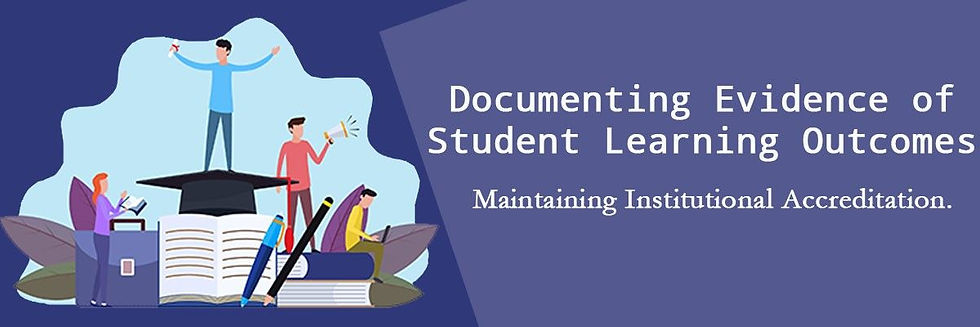
Tracking and Measuring Student Learning Outcomes
Student learning in higher education is becoming increasingly evidence-based and outcome-led. In the past decade, many universities and colleges have made significant progress in assessing and documenting these common student learning outcomes. The accreditation in higher education is based upon becoming increasingly outcome-led, and one of the prime key indicators of a successful campus is the measurable demonstration of Student Learning Outcomes.
ASL – Assessment of Student Learning
ASL (Assessment of Student Learning) is a way to document student's achievements beyond the simple traditional way of giving students grades and it has helped universities and colleges get accreditation from national accreditation agencies like SACS. ASL can help in Student Success.
Why StudentSpace's ASL?
-
Establishes Assessment Standards by creating student course and program competencies.
-
Documents student's skill level achievements measured with standard rubrics.
-
Generates the data related to student learning which can be used for course and program audits.
-
Accreditation’s key goal is to show student learning outcomes can be documented.
-
Contains student support summary data and dashboards.
What others are saying?
“This non-traditional approach generates the data related to student learning using multiple measures which can be used in the accreditation process by the institution.” Ariel Mendez, UMET, Bayamon
In the Assessment of Student Learning, the student is assessed based on skills or competency level in different areas of competency within a course. Effective assessment design enhances student learning and engages students with different learning styles. Assessment influences what a student interprets to be the important learning goals for a course. The assessments should be aligned with course goals and objectives which constitute the means to assess student learning.
Universidad Metropolitana partners with StudentSpace ASL for helping in their Accreditation
UMET Bayamon in PR needed a quick and robust system to demonstrate their Student Learning Outcomes for their SACS accreditation which was facing problems. This is when UMET partnered with StudentSpace and worked with their ASL module. Over 100,000 students were given competencies and their levels were measured and collated in summary data and charts which not only gave valuable data to the deans and other stakeholders but helped UMET save its accreditation status – and over a million dollars.
Student Learning Outcomes Dashboard
The ASL Power BI graph shown below depicts skill levels mastered by gender based on the campus and semester selected in the dropdown respectively. The same can be done for ethnicity, Cohorts, or any other group whose skill level data you would like to track. A number of students assessed in a particular assessment type in a given course. When the user hovers the mouse pointer on any of the vertical bars in the bar graph, it shows a detailed view of the pointed area.
Check it out for yourself by entering the full-screen mode of the Power BI graph shown below:
StudentSpace technology’s role in documenting evidence of Student
Learning Outcomes for Accreditation and Student Success.
In the StudentSpace ASL module the student is assessed based on the competence-based learning (CBL) framework which contains groups of standard competencies and their corresponding rubrics for each course. After the Faculty of each department agrees upon a set of competencies (which usually are outlined clearly by the accreditation agencies), they are then entered into the system. Usually 7 to 9 competencies are made for evaluation for each course.
Usually, there are broadly two sets of competencies in the ASL framework: one is a set of competencies students should master by the time they exit a certain program and the other are different sets of competencies for each course which the student has to master within the program he or she is studying.
Identify Important Points
Faculty can measure the skills for the multiple students at the same time which comes under the same "Assessment Type" and "Same Course" for selected section in particular semester.
From the Faculty login, Faculty can give competency to their related students in the course-section in which faculty teaches and then will add the Qualitative values for them. Admin can define the levels to competencies.
The competency skills that are defined (level given for that competency for each student) from the “Assessment of Student Learning” page will reflect on the “Student Competency” page of individual students.
For evaluated competency, student can give Feedback, by selecting a particular evaluation number in Student Competency page in Student Module when student login and check their own evaluation that is given by faculty; on the assessment type for a course by selecting the evaluation number and can provide its feedback, whether they are satisfied or not by evaluation. This can be viewed by faculty or Admin and appropriate action can be taken.
Assessment is an ongoing process where faculty tells students how he/she is doing then student react with his/her feedback, then faculty can edit the assessment or do a new Visit, then student can react again on the new feedback.
Make it easy to provide assessment to multiple students in one go for a course section of a program.
